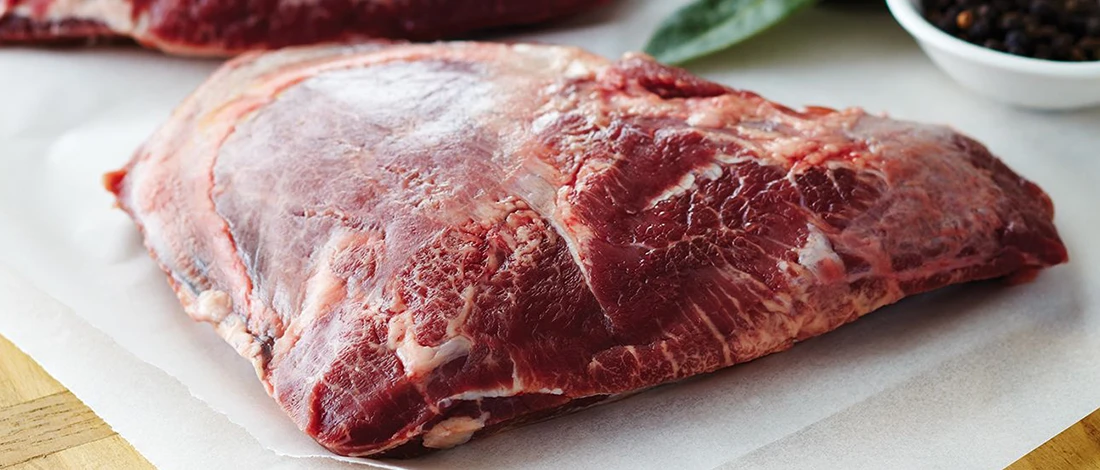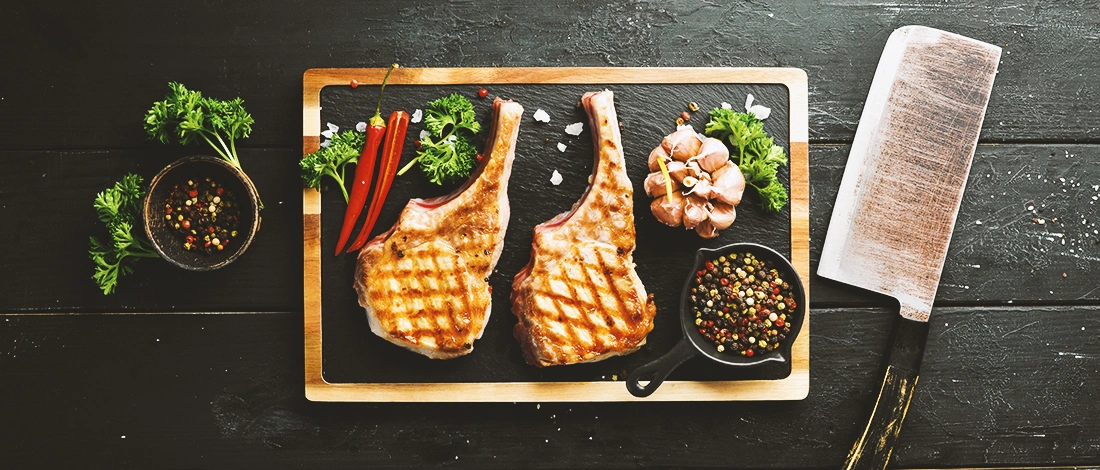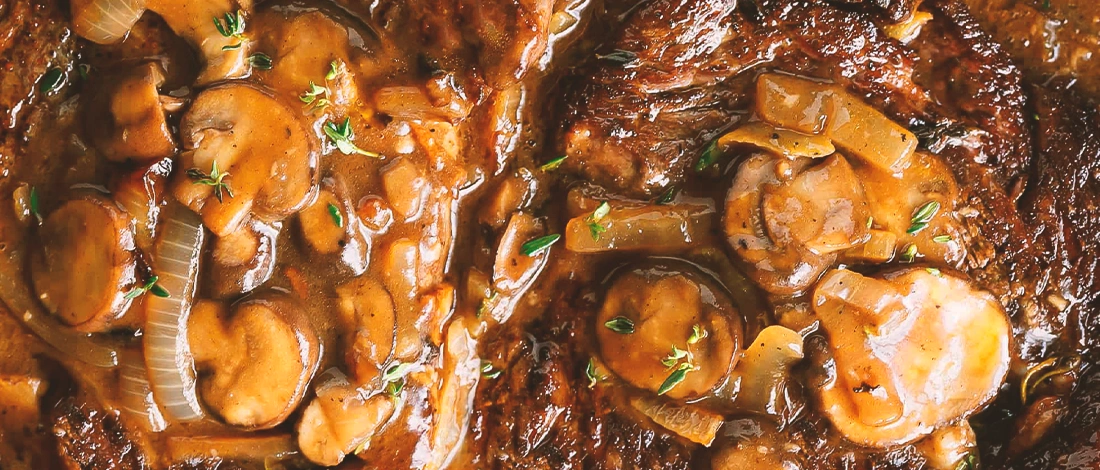Italian cuts are a dream come true for a dedicated carnivore like me. Apart from other cuts I love, prosciutto is a staple of my charcuterie boards when I’m having guests over.
To honor this delicious Italian delicacy, I made it my mission to learn everything about it, and I’m here to share the information with you today.
Let’s get into it.

Quick Summary
- Prosciutto is a type of dry-cured ham that is enjoyed all over the world.
- Prosciutto has a rich and complex flavor.
- Prosciutto is most commonly used as an appetizer.
Understanding Prosciutto

The word prosciutto simply translates to "ham" in Italian, but the word has become associated with a specific type of ham that is made using particular techniques.
It is a beloved Italian meat that is known for its sweet and delicate flavor.
This delicacy has existed since pre-Roman times and is still popular today - particularly in northern Italy.
Different regions of Italy produce their own variations, such as Prosciutto di San Danielle, Prosciutto di Parma, Prosciutto di Modena, and Prosciutto Toscano.
How Is Prosciutto Made?
Prosciutto is made by salting and drying a pig's hind leg. The process takes several months and requires a great deal of skill and patience.
However, the exact prosciutto-producing techniques used in Italy are kept secret and passed down from generation to generation.
Making prosciutto is overseen by a salt master, who ensures that salt, air, and time provide the fullest flavor for this salty product. It is a skilled trade that requires years of experience.
Here is a brief overview of the salting process:
- Prepare: High-quality pork legs are cleaned and trimmed of excess fat and skin. The specific muscles from which the prosciutto is made may vary depending on regional preferences.
- Salt: The pork legs are rubbed with a mixture of salt, sugar, and spices, such as black pepper, garlic, and juniper berries. The salt draws out moisture from the meat, which helps to preserve it.
- Rest: The hind legs are left to rest for a few weeks, during which it is turned over and salted again.
- Dry-age: For the final curing, the leg is hung at a controlled temperature and humidity for several months. During this drying process, the fat melts into the ham, giving the prosciutto its creamy texture. The aging process removes more moisture from the meat, intensifying the prosciutto's flavor and aroma.
The time it takes to dry age pork legs can vary depending on the producer, but it can take a year for the meat to be ready to eat.
Prosciutto Crudo Vs Prosciutto Cotto

There are two types of prosciutto: prosciutto crudo and prosciutto cotto.
Prosciutto crudo, also known as Italian prosciutto crudo, is a dry-cured ham that is not cooked. This is generally what is meant when people talk about this meat.
It has a creamy texture and is often sliced into almost transparent and impossibly thin slices.
Prosciutto di Parma and prosciutto di San Daniele are two of the most famous varieties of prosciutto crudo, with the former being from the Parma province and the latter from the Friuli Venezia Giulia region with a darker and sweeter flavor.
Prosciutto cotto, on the other hand, is a cooked ham similar to other types of cooked pork. Prosciutto cotto has a more fragrant flavor and a salmon pink color, like many cured meats.
"Prosciutto is an iconic and delicious Italian cured meat. It's a staple in my kitchen, and I love to use prosciutto varieties in all sorts of dishes, from simple sandwiches to fancy recipes."
- Mario Batali, American Chef
Related Articles:
Ways to Serve Prosciutto

You can enjoy prosciutto in various ways. Here are some ways I suggest serving prosciutto:
- As an appetizer: Prosciutto can be thinly sliced and served on a meat charcuterie board with bread, cheese, olives, and crackers. Ann Teget, food blogger and founder of Postcard Jar, adds that including something uncommon like cured sausage and even food like this will make a charcuterie board special.
- In a sandwich: Prosciutto makes a great addition to a sandwich with toasted bread. It is delicious when paired with fresh mozzarella, tomatoes, and basil.
- In pasta dishes: Younger prosciutto can be used in pasta dishes, such as carbonara, to add a salty, smoky flavor. It is also a great addition as a delicately sweet flavor on top of pizza.
- Wrapped around fruit: The paper-thin slices also can be wrapped around melon, pears, fresh figs, or other fruits for a sweet and salty appetizer.
- A lavish family meal: A whole leg will let family and guests enjoy the unique flavor of this Italian delicacy.
Nutrition Facts for Prosciutto
While Italian prosciutto is delicious, it is also high in sodium and fat, so it should be consumed in moderation.
Here are the nutrition facts for a 100-gram serving of prosciutto:
- Calories: 214
- Total fat: 12.5 grams
- Saturated fat: 5.4 grams
- Cholesterol: 71 milligrams
- Sodium: 1,857 milligrams
- Protein: 25 grams
Prosciutto is a good source of total protein and contains iron, which is essential for healthy blood cells.
However, it is high in sodium, which can contribute to high blood pressure, and it is also high in saturated fat, which can contribute to heart disease [1].
Culatello vs Prosciutto
There are three main similarities between Culatello and Prosciutto di Parma:
- Both cuts are from Northern Italy, specifically the Parma region
- Both come from adult swine
- Both are PDO certified
Here are all the differences between Culatello and Prosciutto:
- Culatello is made with thigh muscles without any fat or rind. Prosciutto maintains some fat and rind.
- Culatello is treated with a mix of salt, garlic, and pepper, and prosciutto is treated with sea salt and sometimes red wine.
- Prosciutto loses about 4% of its weight because the salt releases moisture. Culatello loses about 40% of its weight by the end of the curing process.
- Culatello is made along the Po river, while prosciutto is made in the Northern Italy hills area, between Emilia and Apennine.
- While Prosciutto is refrigerated, Culatello is exposed to light and humidity during the maturing process.
- Culatello weighs three kg max, while Prosciutto is at least 7 kg.
- Culatello is more expensive and has a higher cost per kg, while Prosciutto is more affordable per kg.
- Prosciutto can be safely exported, while only one producer can export Culatello from the Parma region and outside Italy.
- Prosciutto has a rounded shape, while Culatello salami is pear-shaped.
- Prosciutto raw ham has a stronger flavor compared to Culatello.
- Prosciutto is better eaten with more intense flavors, such as focaccia, while Culatello should be eaten with white bread. The intense flavor will cover the delicate taste of Culatello.
FAQs
Is It OK to Consume Prosciutto Raw?
Yes, it is OK to consume prosciutto raw since it has been cured. You do not need to cook prosciutto as the salting process has made it safe to consume.
Does Prosciutto Count as Processed Meat?
Yes, prosciutto counts as processed meat because it is made using curing, smoking, or salting techniques. This means that, like other meats such as bacon and ham, it has been "processed" to last longer than fresh meat.
Does Prosciutto Need to Be Refrigerated?
Yes, prosciutto needs to be refrigerated to keep it fresh and safe to eat. It should be wrapped tightly in plastic or wax paper and stored in the coldest part of the refrigerator. The curing process does much to preserve the meat, but you still do not want your delicious ham exposed to bacteria at room temperature.
What Cheese Pairs Best With Prosciutto?
Parmigiano-Reggiano, Gorgonzola, and Mozzarella pair best with the prosciutto taste. Be wary of sharp cheeses, as they may overpower the taste of prosciutto rather than just enhancing it.
What Type of Prosciutto is Best?
Prosciutto di Parma is best type of prosciutto. It has a rich flavor because it’s aged twice as long as other types of ham.
Reference:
- https://fdc.nal.usda.gov/fdc-app.html#/food-details/371708/nutrients








